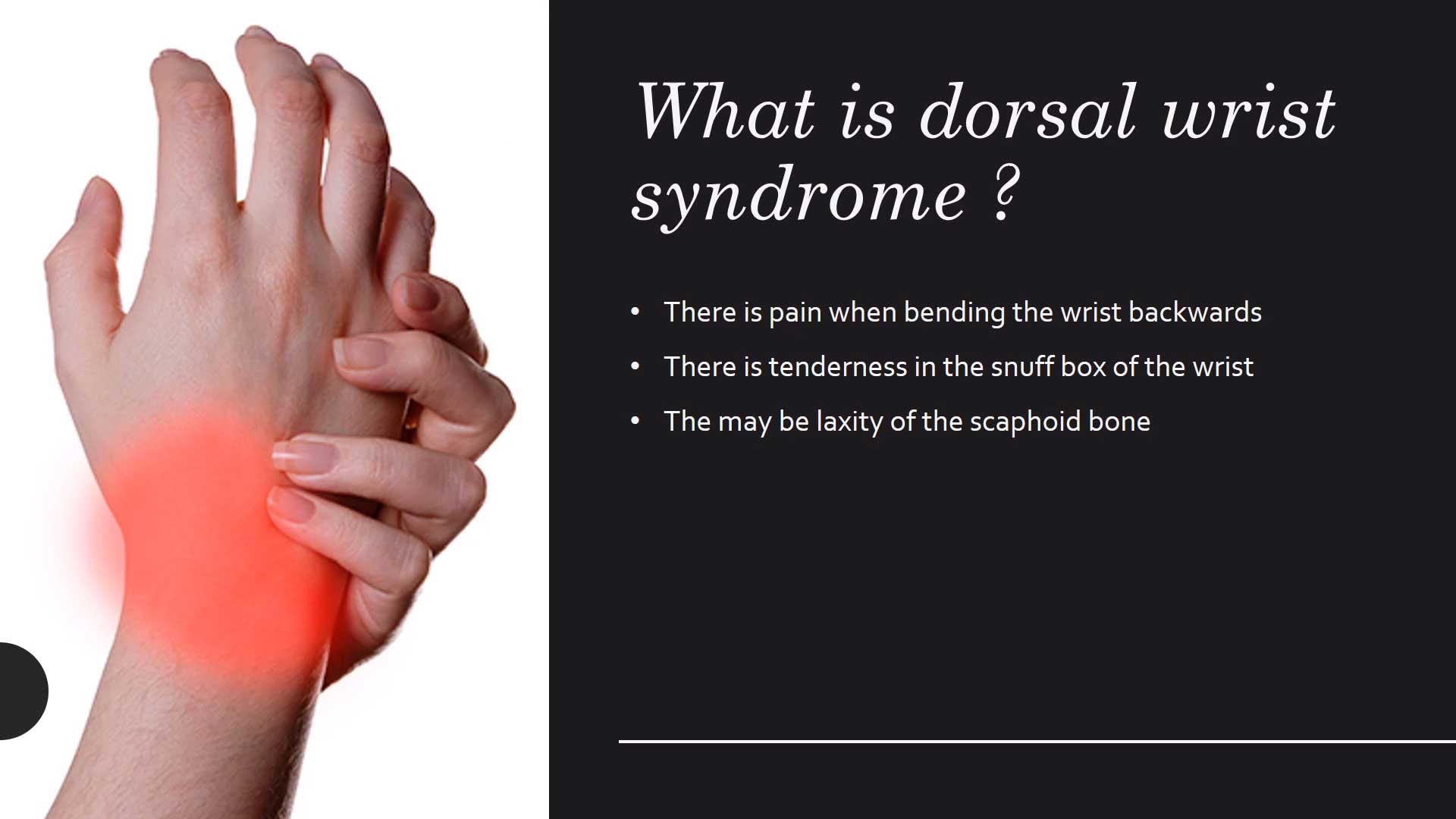
What is Dorsal Wrist Syndrome?
Dorsal wrist syndrome is actually the most common cause of wrist pain on the thumb side of the wrist.
It is worse or made worse:
- When the wrist is bent backwards.
- The pain is worse with heavy-lifting.
- Patients sometimes have pain with heavy gripping or after releasing after heavy gripping.
- It’s often made worse or irritated by typing or keyboard work.
- Patients will very often have a lump on the top of the wrist or a dorsal ganglion, as seen in this picture here. The dorsal ganglion itself is usually a bit of joint fluid that escapes from the damaged joint surface in dorsal wrist syndrome.
- Eventually, people with dorsal wrist syndrome will develop arthritis if it’s no managed properly.
- They will eventually develop constant pain and stiffness, so it’s a very important thing to understand.
- Patients will usually have pain with the thumb side of the wrist.
- There is usually pain when bending the wrist backwards.
- There is often tenderness in the snuff box – this area here of the wrist. When pushing hard here, patients will often feel pain.
- There may be laxity or looseness in one of the bones in the wrist called the scaphoid bone, which is located approximately here in the wrist.
What Causes Dorsal Wrist Syndrome?
The cause of dorsal wrist syndrome is when the wrist bends backwards, generally past 35-degrees as seen in this gymnast, the cartilage and the ligaments in the proximal row or the very initial part of the wrist in this area here are damaged.
The reason they’re damaged is because the contact surface area of the joint goes from a large one-centimeter contact surface with a straight wrist into this very tiny one-millimeter contact surface when the wrist is bent and that creates damage to the cartilage along the wrist surface here and it creates damage to the ligaments along the wrist surface here, eventually leading to cracked cartilage, loose ligaments, and arthritis.
Who is at Risk for Dorsal Impaction Syndrome?
- Individuals with more flexible wrists.
- Younger people, women, often people with very slim builds.
- Individuals who regularly put heavy weight against an extended wrist are at higher risk.
- Gymnasts, people who are doing pushups such as this woman here with her wrist bent. People who weight lift and allow their wrist to bend backwards. People who do yoga with a downward dog and the wrist bent in this position. Often people who work with their wrists after force and bent back, such as carpenters, can develop this if they don’t have good wrist positioning while working.
How is it Treated?
- There is no way to repair the damage once it has occurred.
- Prevention is the main treatment.
- Avoidance of activities that bend the wrist past 35-degrees.
- If you’re doing an activity where your wrist may be forced back, consider a splint that holds your wrist in a neutral position, such as this one here.
- There is also specialized Dorsal Impaction Hand Therapy. I am aware of one therapist who can provide this.
What about the Pain?
If one has chronic pain, there is a stepwise approach to treatment.
- Initially, we start with splints.
- Specialized Dorsal Impaction Hand Therapy Programs. Currently, I am aware of one.
- Anti-inflammatory creams and medications
- Cortisone injections
- Surgery, however, this is a last resort used for salvage or desperate situations. Surgery includes:
- Resection of the nerves that provide pain to the wrist.
- Partial or complete wrist fusion.
Watch Dr. Anzarut’s Video on Dorsal Wrist Syndrome
